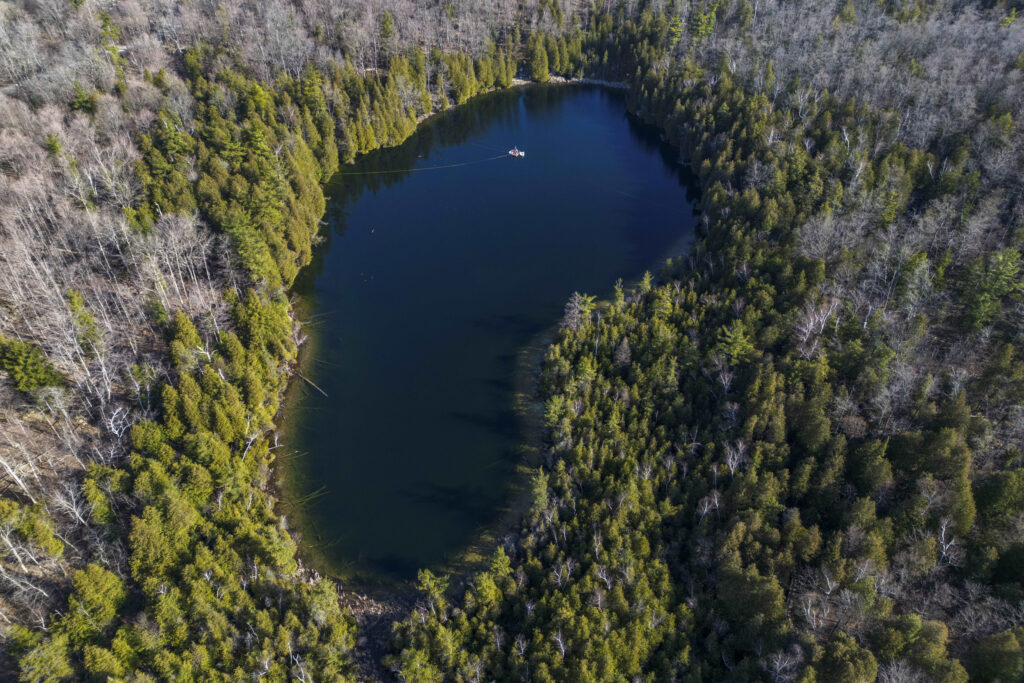There are so many geological periods it’s hard to keep track even of ones that do exist let alone invented ones like the “Anthropocene”. We even take the view that calling the Holocene an “Epoch” is vainglorious; it might be when we humans invented civilization but to the Earth it’s just a minor instance of the recurrent warm but brief interglacial periods in the Pleistocene Epoch aka the ongoing Ice Age that began 2.5 million years ago. (In which case, we also quibble, the Pleistocene Epoch and the Quaternary Period are one and the same.) So what about this Meghalayan? It’s an Age. (Yes, even keeping track of the names of the time periods is a challenge). But Wikipedia incautiously admits that “It was officially ratified by the International Commission on Stratigraphy in June 2018” and “begins 4,200 years BP (c. 2250 BCE or 7750 HE)… with a 200-year drought that impacted human civilizations in the Eastern Mediterranean, Mesopotamia, the Indus Valley and the Yangtze River Valley.” Why do we say “incautiously”? Because if you look at the temperature profile of the Holocene you see that this drought and various other negative impacts were caused by… cooling not warming.
This Meghalayan, named for a “Krem Mawmluh Cave formation” (which we also can’t pronounce with confidence) in the northeastern Indian state of Meghalaya, is also known as the end of the Minoan Warm Period. Terms like “Late Bronze Age collapse” give some idea how great that cooling was. As does Wikipedia’s item saying:
“The Late Bronze Age collapse was a time of widespread societal collapse during the 12th century BC, between c.1200 and 1150. The collapse affected a large area of the Eastern Mediterranean (North Africa and Southeast Europe) and the Near East, in particular Egypt, eastern Libya, the Balkans, the Aegean, Anatolia, and the Caucasus. It was sudden, violent, and culturally disruptive for many Bronze Age civilizations, and it brought a sharp economic decline to regional powers, notably ushering in the Greek Dark Ages.”
As usual there’s liable to be some claim that it was a local European phenomenon. Mind you, alarmists are usually OK with global climate change prior to the Roman Warm Period, and after the Little Ice Age, just not the 2,000 years in between. But China was politically fragmented and riven with conflict during the cold period that ended with the Roman Warm Period that saw the Han dynasty unify China.
Even if one concedes that political history across the world is largely uncertain in this period, as well as fragmentary, one key point must surely stand out. The Meghalayan sees a significant, widespread natural cooling cycle from temperatures considerably warmer than today to which the planet has never returned.
So much for unprecedented modern warmth, temperature stability and all those trappings of misguided climate alarmism.



This Meghalalyan debate is more proof we should return to calling CLIMATE "weather." Regarding societal disruptions, I read a biblical commentary that says the Book, Ecclesiastes, was written during one such period, and inspired that concept, "There is nothing new under the Sun." Speaking of which, I recently read a book titled Dark Winter--How The Sun Is Causing a 30 - Year Cold Spell, by a fellow named, John L. Casey. (Yes, all those caps are in the sub-title.) It is a quick read of 163 pages, including notes and glossary, and I recommend it. Mr. Casey posits, there is no such thing and anthro--prog---you know the thing--Man-Made global warming, and the weather on Planet Earth is governed by the big, flaming, yellow ball of nuclear reactions in the sky, and not Gretta or Al Gore. Who knew? I also read in That Old Book, "Put not, your faith in men."
But William, That Old Book is also not something with a record you want to rest your faith in. I mean, clearly you aren't thinking clearly if you do.
Thylacine - aren't you extinct already ? (Better known to non Australian readers as the Tasmanian Tiger ) The dessication of northern Africa circa 6500 years ago forming the Sahara desert from what was relatively well watered savannah came to the attention of Freeman Dyson who looked into it as a physicist and free thinker and led to his contrarian views on global warming, CO2 and the whole catasrophist bit . Worth reading his findings -eg the 'roots to shoots' ratio for annual plants and trees that effectively sequester carbon and the greening effect of 'excess' CO2 . A wise man sadly lost to us .
There is man made warming, but most of it is localized and is known as the heat island effect. Since many of the official temperature recording stations are in locations that have become urbanized , the integrity of the temperature record is suspect and biased towards warming .